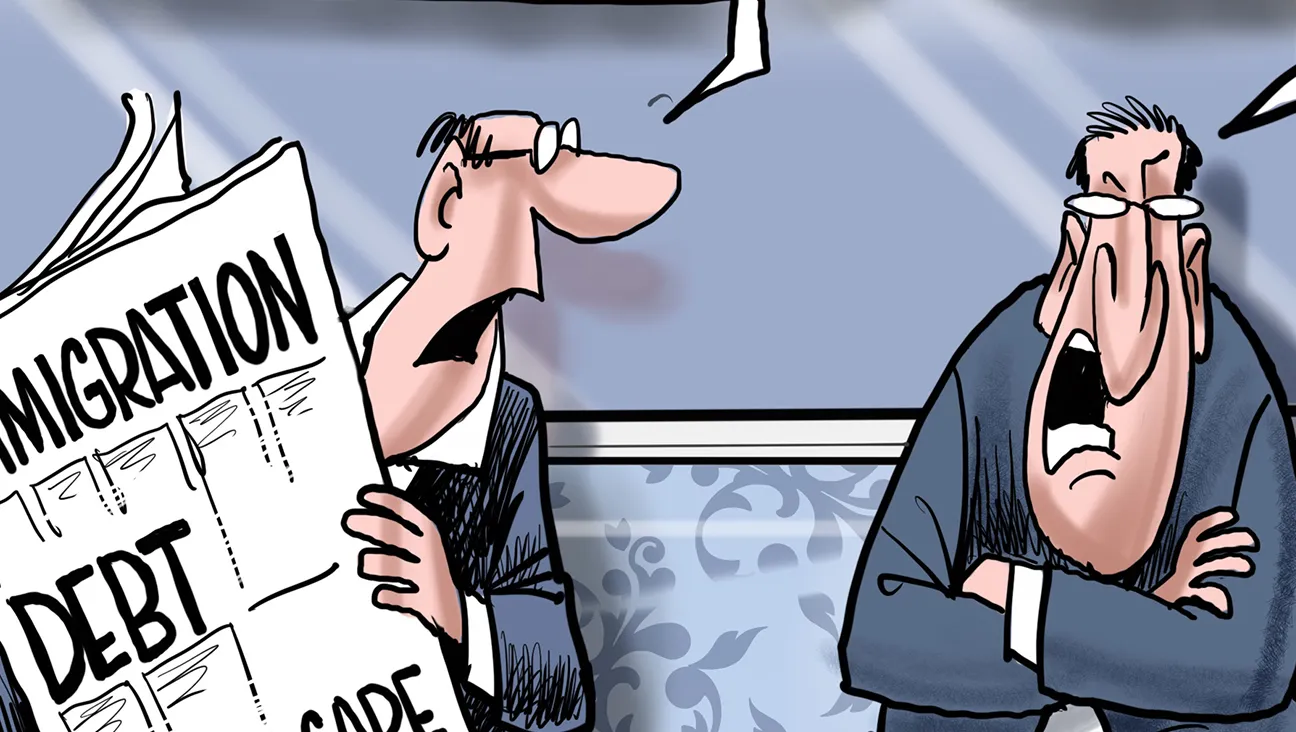Political Term Limits Pros Cons - A Comprehensive Analysis
Explore the advantages and disadvantages of political term limits in this in-depth analysis. Learn about the impacts on governance

Exploring the Pros and Cons of Political Term Limits
The concept of political term limits has been a topic of debate and discussion for decades. Term limits restrict the number of consecutive terms an individual can serve in a particular political office, such as the presidency, governorship, or legislative positions. Supporters argue that term limits can bring fresh faces and ideas into government, reduce the risk of corruption, and prevent the consolidation of power. On the other hand, opponents believe that term limits can undermine the democratic process, limit experienced leadership, and lead to a revolving door of inexperienced politicians. In this article, we will delve into the potential benefits and drawbacks of political term limits.
Benefits of Political Term Limits
Preventing Career Politicians: One of the primary arguments in favor of term limits is that they prevent individuals from becoming career politicians. Elected officials may lose touch with the concerns of ordinary citizens over time, and term limits can ensure that they return to their private lives and professions after serving a set number of terms. This can help maintain a diverse pool of leaders with varied life experiences.
Fostering Fresh Ideas and Perspectives: Term limits can encourage the infusion of fresh ideas and perspectives into government. When new individuals are elected, they may bring innovative solutions to longstanding problems and challenge the status quo. This can lead to more dynamic and responsive governance.
Reducing the Risk of Corruption: Overly long tenures in office can sometimes lead to complacency and an increased risk of corruption. Term limits can mitigate this risk by limiting the time an individual has to amass power and influence. This can help maintain the integrity of the political process.
Breaking Up Political Dynasties: Term limits can disrupt political dynasties and reduce the concentration of power within a few families or individuals. This opens up opportunities for a wider range of citizens to participate in government and reduces the perception of politics as an exclusive club.
Encouraging Civic Engagement: Knowing that incumbents will eventually step down due to term limits can encourage more people to become politically active and run for office. This can lead to a more engaged and vibrant democracy.
Drawbacks of Political Term Limits
Loss of Experienced Leadership: One of the main criticisms of term limits is that they can lead to a loss of experienced leadership. Elected officials who have served for multiple terms may have a deeper understanding of complex issues and the legislative process, which can be beneficial in crafting effective policies.
Potential for Inexperienced Politicians: Term limits can result in the election of inexperienced politicians who may lack the knowledge and skills necessary to govern effectively. This can lead to instability and inefficiency in government.
Short-Term Focus: Elected officials who know they have limited time in office may focus on short-term accomplishments to boost their re-election chances or secure their legacy, rather than making decisions that benefit the long-term interests of the country or constituency.
Loss of Voter Choice: Some argue that term limits limit the choices available to voters by forcing out competent incumbents who may have been the preferred choice of their constituents.
Potential for a Revolving Door: Term limits can create a revolving door of politicians who move from one office to another as their terms expire. This can disrupt the stability and continuity of government.
Implementation Considerations
When discussing the potential benefits and drawbacks of political term limits, it's crucial to consider the nuances of their implementation. The way term limits are designed and applied can significantly impact their effects on governance. Here are some key implementation considerations:
Duration of Term Limits: The duration of term limits can vary widely. Some positions may have short limits of just a few years, while others, like the presidency, may have longer limits. Striking the right balance between preventing political stagnation and allowing for experienced leadership is essential.
Grandfather Clauses: Some term limit policies include grandfather clauses that allow current officeholders to serve beyond the newly established limits. While this can address concerns about the immediate loss of experienced leaders, it may also undermine the principle of equal opportunity for all candidates.
Consecutive vs. Lifetime Limits: Term limits can be designed as consecutive (where individuals can't serve consecutive terms but can return after a break) or lifetime limits (where individuals are permanently barred from holding the same office after reaching the limit). The choice between these options can influence the political landscape significantly.
Transparency and Accountability: Effective implementation of term limits requires transparent processes and mechanisms to ensure compliance. Monitoring and enforcing term limits are essential to prevent individuals from circumventing the rules or finding ways to maintain power behind the scenes.
Effect on Political Parties: Term limits can affect political parties differently. They may encourage parties to cultivate new talent and broaden their candidate pool. However, they can also disrupt established party structures and encourage factionalism.
Institutional Knowledge Transfer: When term limits result in the departure of experienced leaders, it's essential to have mechanisms in place for the transfer of institutional knowledge. This can help maintain the continuity of government operations and policy effectiveness.
Alternative Career Paths: Politicians facing term limits should have opportunities for alternative career paths after leaving office. This can include provisions for post-political employment, which can help prevent the revolving door problem.
Public Education: Effective implementation of term limits also requires public education. Voters need to understand the reasons behind term limits and their potential impact on governance. An informed electorate is better equipped to make choices that align with their preferences.
Case Studies
To gain a deeper understanding of the effects of term limits, let's briefly examine the experiences of a few countries:
United States: The U.S. imposes term limits on the presidency, with a maximum of two terms. These limits were put in place to prevent a repeat of long-serving presidents like Franklin D. Roosevelt. While they have prevented the consolidation of power in the executive branch, some argue they also create a lame-duck period for second-term presidents.
Mexico: Mexico has term limits for its presidency, limiting presidents to a single six-year term. This has reduced the potential for authoritarian rule but may also lead to a lack of accountability in the final years of a president's term.
Nigeria: Nigeria has term limits for its governors and presidents. While this has led to a turnover of leadership, it has also resulted in a proliferation of political parties and frequent changes in government, which can create instability.
The discussion surrounding political term limits remains multifaceted and context-dependent. Whether term limits are a boon or a bane for a nation's governance largely depends on how they are designed, implemented, and their specific impact on the political landscape. Striking the right balance between fresh leadership and experienced governance is a challenge that policymakers must navigate carefully. Ultimately, term limits should serve the best interests of the people by fostering a vibrant democracy and effective governance while minimizing the potential drawbacks.
What's Your Reaction?















